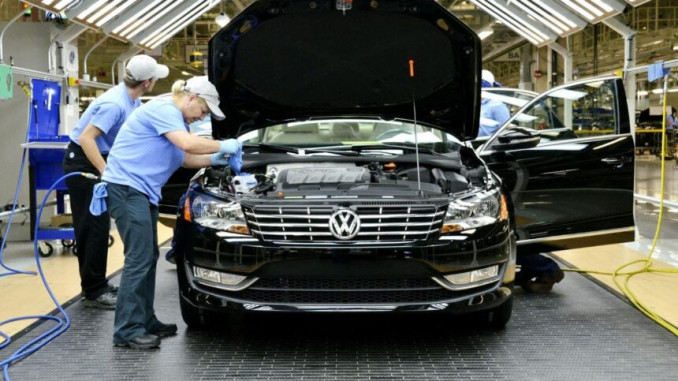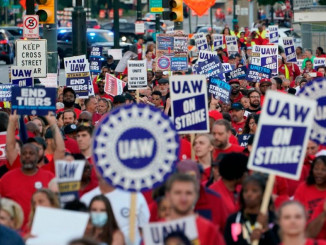
Non-union auto plants now employ about 50% of the workers building cars and trucks in the United States. Most of these plants are in the South. Organizing the non-union auto plants in the South is a challenge the United Auto Workers has faced for 40 years without success. So when workers employed at Volkswagen’s Chattanooga Tennessee plant voted in April to join the UAW, it seemed that perhaps unions in the South had made a breakthrough. But in a frustrating turn of events, on May 19, the National Labor Relations Board (NLRB) announced that by a margin of 597 votes, workers in the Alabama Mercedes plant complex had voted against being represented by the UAW. 92% of the 5075 workers turned out to vote; 2,045 were in favor of forming a union, and 2,642 were against it.
In the aftermath of the defeat, the United Auto Workers President Shawn Fain said that the UAW remains committed to organizing in the South. He charged that Mercedes management had fired workers carrying out organizing activity in the plant, which is against the law. Fain highlighted how local politicians, including Alabama’s governor, campaigned to scare auto workers into believing that organizing a union would somehow cost them their jobs. The union president pointed out that the workers in Chattanooga had twice voted against unionizing before finally voting by a ratio of 3 to 1 to make the UAW their bargaining agent.
Under the threat that the workers would vote for the UAW, Mercedes management made some concessions, such as eliminating the two-tier wage system. Just before the election, the plant superintendent was transferred out of the plant. The new boss walked around the plant, pleading with the workers to give him a chance to show how the company would improve conditions.
The UAW believed that the much-publicized gains it made in contracts negotiated with Ford, GM and Stallantis/Chrysler last year, plus the success in Chattanooga added momentum that would carry it to victory if it moved quickly for a vote on unionization at Mercedes. Workers at the plant’s departments are grouped in Teams, and Team Leaders are workers who can move around their departments, shifting workloads between Teams to keep production moving smoothly. Team Leaders have a lot of influence on Team members. Consequently, UAW leaders in the plant prioritized winning the support of the “Team Leaders,” who pledged to solicit votes for the UAW from the workers in their Teams. Team Leaders are not part of management, but they work closely with it, and Team Leaders often become supervisors. Relying on Team Leaders at first generated broad support from production workers for the UAW. However, when management intensified its campaign against the UAW, some of the pro-UAW Team Leaders changed sides and encouraged their Teams to vote no.
UAW president Fain predicted that Mercedes workers would soon discover that nothing will change despite the new CEO’s promises. Counting on this, the UAW expects to win at the next election. Usually, the NLRB won’t schedule a new vote until a year has passed, but if it finds that Mercedes fired workers for supporting unionization, a revote could come sooner.
Statements by rank-and-file Mercedes workers signify that UAW supporters are assessing what went wrong with the previous campaign and how to do better next time. (For more information, see this Labor Notes blog post.)
Even though the UAW ran a flawed campaign, there is a big base of support in the plant and plenty of issues to organize around. Union elections by themselves change nothing unless they are backed up by the capacity of organized workers to stop production. There is no good reason why the pro-union workers have to wait for an election to show that organized workers have the power to force changes on management. Doing so is the best tactic for the UAW’s supporters to build rock-hard support for unionizing in the entire workforce.




